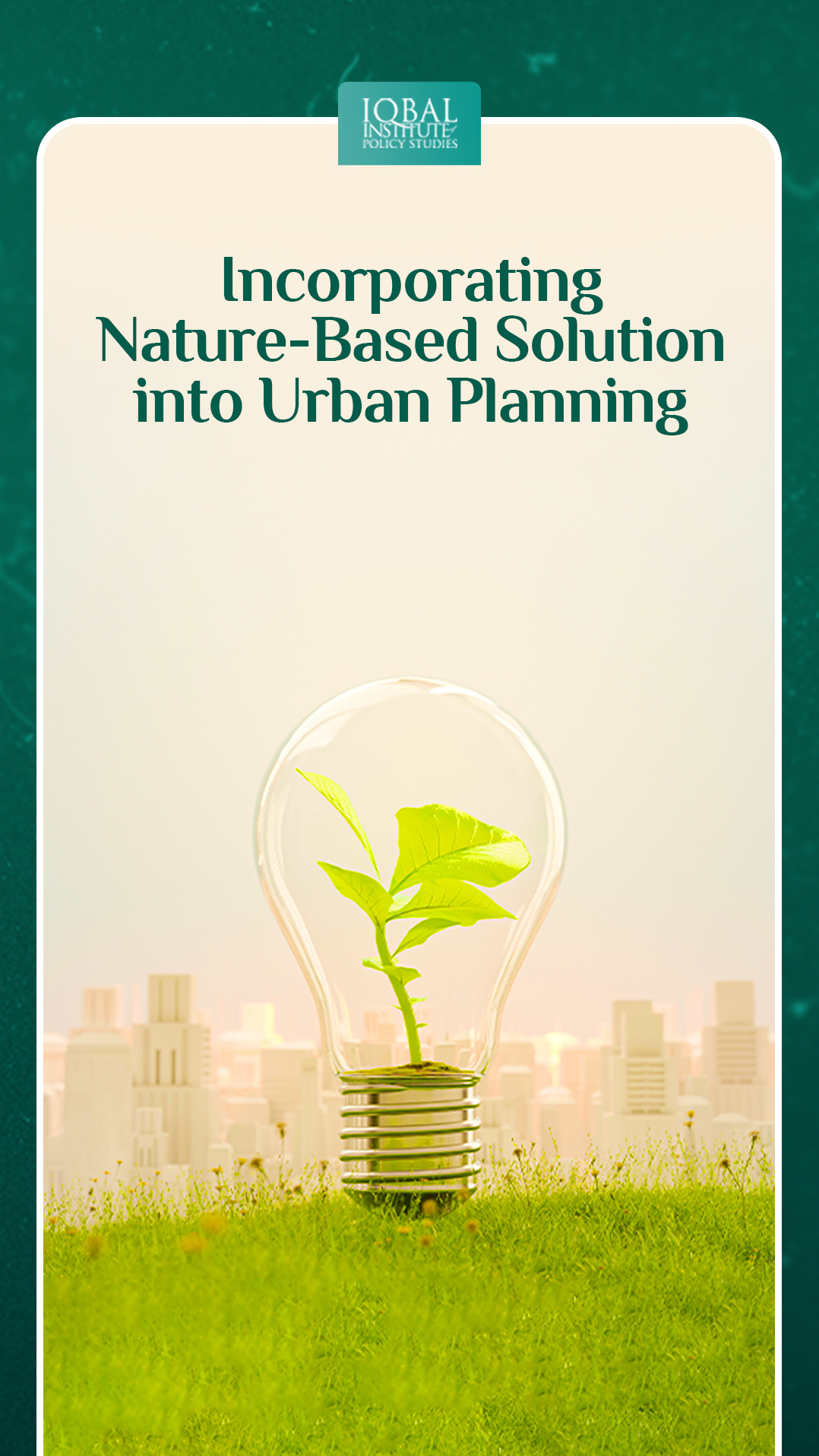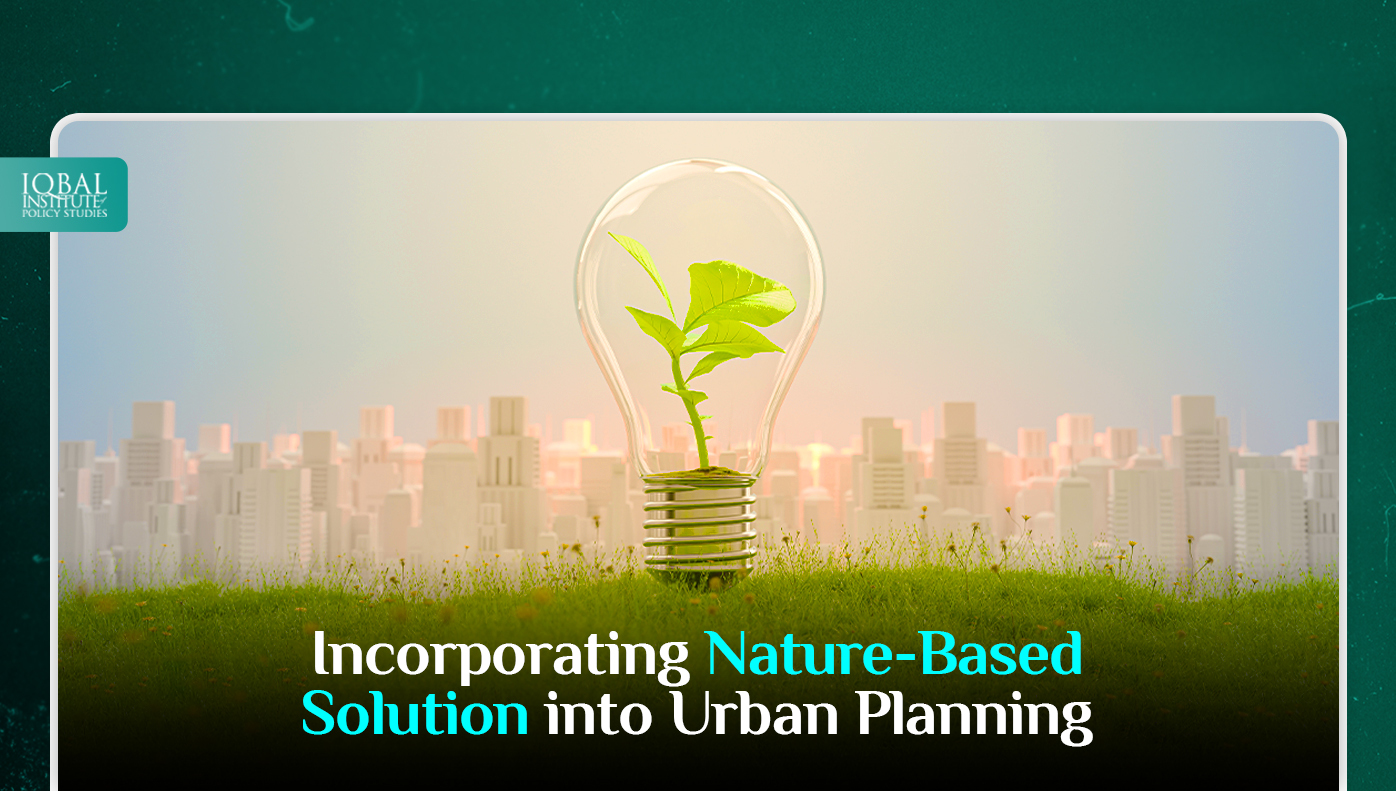Relevance of Nature-based Solutions in an Urbanised World
Cities are facing various challenges mainly related to economic, environmental and social. Over the past few decades, natural resources have been affected by the environment putting cities and their surroundings under pressure in terms of resource scarcity, degraded air and water quality, reduced availability of green space and many more. Moreover, rising global temperatures have led to an increase in the intensity and frequency of natural disasters such as droughts, floods and heatwaves leaving densely-populated areas, their citizens and infrastructure particularly vulnerable.
Nature-based-solution i.e., floodpains, green roofs, open green spaces, and urban trees can be the main source of addressing the challenges. They can safeguard urban biodiversity and increase the attractiveness and quality of life experienced in urban areas. The International Union for Conservation of Nature has defined Nature-based solutions as “actions to protect, sustainably manage, and restore natural or modified ecosystems that address societal challenges effectively and adaptively, simultaneously providing human well-being and biodiversity benefits.”
Ecosystem services include those benefits which people will receive from the ecosystem and consist of water, timber, fibre, and food. The nature-based solutions also encourage green infrastructure and it is defined as a strategically planned network of natural and semi-natural areas with other environmental features designed and managed to deliver a wide range of ecosystem services. It incorporates green spaces and other physical features in terrestrial and marine areas. On land, green infrastructure is present in rural and urban settings. It can sometimes offer an alternative, or be complementary, to standard gray solutions. The ecosystem-based approach ensures the use of biodiversity and ecosystem services to help people adapt to the adverse effects of climate change as part of an overall adaptation strategy.
Nature-Based Solutions for Sustainable Urban Development
The need-base solution is important for the urban development of three levels and these are:
Within the cities, the nbs provide natural shading and rescue the effect of urban heating and fulfill the cooling needs, manage run-off water, improve health and well-being by mitigating air pollution and offer recreational spaces.
Around Cities, NBS provide opportunities of inter-city linkages and it includes watershed management, recreational spaces, wildfire management, reduction and capture of CO2, sand and dust storm reduction measures.
Away from Cities, where nature-based solutions can be applied to the procurement of goods and infrastructure as well as built environment decisions that influence urban supply chains.
Nature based solutions have the ability to address the urban challenges which are aggravated by the growing urban population and climate change. The solutions suggested by nbs are cost effective, multi-functional and provide a wide range of benefits, from improving public health to reducing energy costs and pollution to regenerating urban spaces. Moreover, the local government can implement the green infrastructure and green roof tops to help cities to become more resilient to extreme weather conditions, support urban gardens to strengthen food sovereignty and expand the blue and green spaces, improve the quality of life for residents and create popular recreational areas.
The Multi-functionality, Value and Cost-effective Solutions
Nation Based Solution provides various cost-effective solutions for instance;
Green walls and roofs can foster urban diversity and improve the attractiveness of a particular area and moreover, it facilitates the tenants as it is reducing their cooling cost.
Urban gardens have the ability to increase the social cohesion, local food sovereignty, provide opportunities for learning and contribute to urban biodiversity.
The green space in the form of forest areas is sequestering the carbon, regulating the micro-climate, purifying the air and reducing the urban noise. In addition, spending time in nature and in direct contact with natural elements enhances mental health and well-being.
Nature-Based Solutions for Urban Regeneration
Availability and accessibility of the urban spaces are essential indicators to assess the urban spaces. In developed countries, governments are increasingly turning the cities into the nature based solutions to provide attractive setting and to enhance the health, well being, quality of life of their residents
To make room for greenways that enhance air quality and promote the use of alternate modes of transportation, fewer inner-city lanes are needed.
Rivers and wetlands that have been contaminated and damaged are transformed back into nearly natural systems, improving both the water quality and property values.
Case Study : European Green Capital
The metropolis of Essen, which is located in the Ruhr Metropolitan Area, the former industrial powerhouse of Germany, has transformed from a gray, industrialised metropolis to a green city with a good quality of life. While remnants of the city’s coal and steel past still dot the landscape, hundreds of hectares of open space have been developed over the past few decades through the conversion of abandoned industrial buildings and mining operations.
Stuttgart, a city in southern Germany, is particularly vulnerable to the urban heat island effect and poor air quality due to its location in a valley with a mild, temperate temperature and low wind speeds. Stuttgart has established a comprehensive set of nature-based solutions together with important regulatory laws and incentive programmes to better address these difficulties and get ready for a warmer future. For instance, green ventilation channels have been built to allow fresh air to flow in from the hills above the city.
Construction is prohibited in key locations to protect the efficacy of these green aeration lanes, placing public health concerns above increased property tax revenues. Stuttgart, a leader in the field of green roofing, has more than two million square metres of vegetated roofs that trap pollutants and dissipate excess heat. The municipal government has mandated the installation of a green roof on all new structures since 1986, and this rule was expanded to cover all new structures in 1993. The city’s aim to expand the use of green roofs has also benefited from tax incentives and specialised financing programmes.
How to Implement Nature Based Solution
Despite increasing awareness of the potential of nature-based solutions, more work needs to be put into making them operational in terms of both policy and urban design, as well as making it easier for them to be put into practice. The following are crucial elements to speed up these mainstreaming processes:
Creating a solid evidentiary base for nature-based solutions, such as by calculating ecosystem services and/or evaluating additional value and side effects;
Promoting the use of natural solutions by emphasising their versatility and capacity to support a range of policy areas, including economic development, public health, and climate change adaptation;
Fostering cross-sector support and commitment for nature-based solution policies and planning guidelines by encouraging cooperation among the whole range of stakeholders, including urban planners, utility operators, municipal authorities, and residents;
Utilising traditional resources and opening up cutting-edge finance options including green bonds, adoption funds, taxes and fees, and public-private partnerships to put natural solutions into practice.
This article is written by Sehrish Irfan. Sehrish is a Research Analyst at the Iqbal Institute of Policy Studies (IIPS).



Leave a Reply